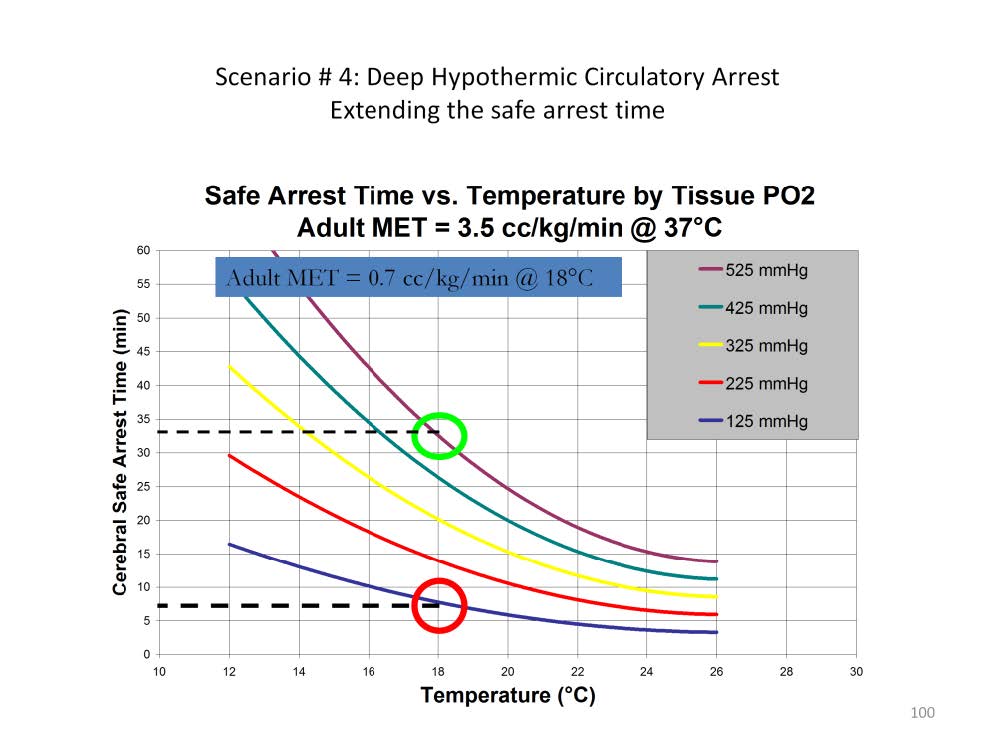
The metabolic equivalent (MET) is a physiological concept expressing the energy cost of physical activities as multiples of the resting metabolic rate which is 3.5cc O2/kg/min in adults*. For example, an adult just sitting still would have a MET of 1. During exercise the same adult may be using 5 METs (17.5cc O2/kg/min). However during profound hypothermic arrest, the overall MET drops to 10% of the metabolic rate; 0.35 ccO2/kg/min. In the brain the MET only drops to 20%; 0.7 ccO2/kg/min.
Based on an average tissue pO2 of 125 mmHg at 18C (~ 5 cc/L of dissolved O2), the safe arrest time would be approximately 7 minutes before the brain consumed all the dissolved oxygen and converted to anaerobic metabolism. During anaerobic metabolism, the brain becomes acidotic and increasingly susceptible to reperfusion injury when perfusion is restored.
However based on an average tissue pO2 of 525 mmHg at 18C (~ 22 cc/L of dissolved O2), the safe arrest time would be approximately 31 minutes before the brain consumed all the dissolved oxygen and converted to anaerobic metabolism. This extended safe arrest time reduces the risk of reperfusion injury when blood flow is re-established.
*Infants have a higher base MET; 6cc O2/kg/min.

Perfusion Theory is an educational platform for the Oxygen Pressure Field Theory (OPFT). August Krogh’s theoretical concept of the oxygen pressure field is explained and then applied to clinical applications in perfusion practice.